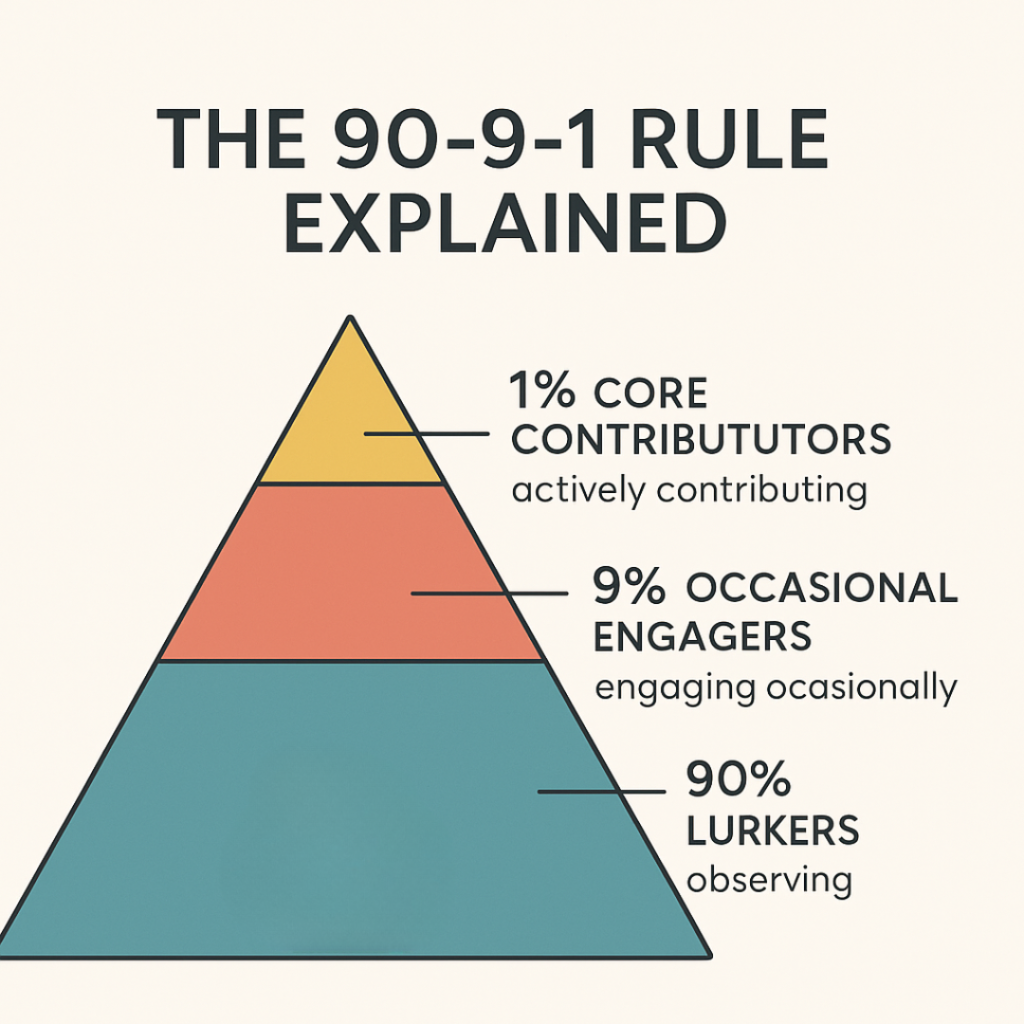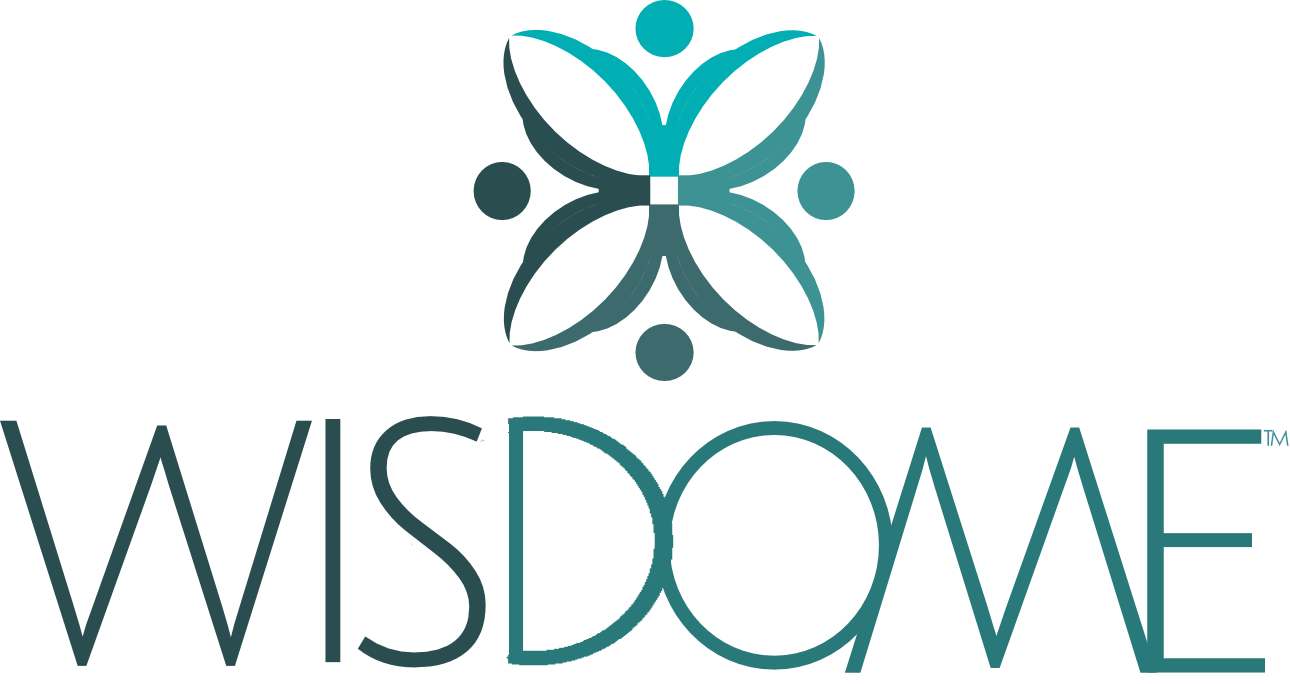You’ve finally launched your online community, made your first post, and hit publish.
And now… silence.
This doesn’t mean failure. It’s actually a normal phase of community building and there’s a name for it: the “silence phase.”
Now that you’ve acknowledged this silence as part of the process, you can shift your focus to what really matters: helping your members feel safe, seen, and supported so they can thrive.
Let’s explore how to move from silence to genuine connection and build an engaged online community from the ground up.

Understand the 90-9-1 Rule of Online Community Engagement
This concept was introduced by the Nielsen Norman Group, and it can completely shift how you measure engagement in your online community.
What is the 90-9-1 Rule?
The 90-9-1 rule is based on research showing how people typically behave in online spaces:
- 90% of people are lurkers. They read, observe, scroll through your content but don’t react or comment. They’re learning in silence, and actually that’s not a bad thing.
- 9% of people will engage occasionally. These are the ones who might like a post, comment every now and then, or vote in a poll.
- 1% of people are your tribe. They actively post, contribute to discussions, reply to others, and participate in your activities.
This ratio has remained consistent across forums, learning platforms, and course communities for over two decades. So if your community feels quiet, know that this is expected behaviour, not a reflection of your content or value.
Prefer watching instead of reading? We’ve turned this article into a short video.
Click below to watch and learn more 👇
The Positive Side of Silence
Silence doesn’t mean your members aren’t interested. It often means they’re:
- Observing and learning
- Figuring out if this space is right for them
- Waiting to see how others interact before they do
Instead of viewing silence as rejection, treat it as an opportunity to:
- Notice what’s getting clicks or views
- Spot patterns in engagement (even if it’s low)
- Begin shaping content around what your audience genuinely needs
🧠 Tip: Silence is a signal. Let it guide you instead of discourage you.
5 Practical Ways to Build a Stronger Online Community
1. Track Quiet Signals
Even when members don’t comment or like your posts, they may still be engaging in subtle ways.
Start tracking:
- Email open rates – Who’s reading your newsletters?
- Click-through rates – Which links are they curious about?
- DM responses – Are they replying privately instead of posting publicly?
These are quiet but powerful signals of intent.Use this data to double down on what’s working and gently tweak what’s not.
2. Run Free Events to Build Trust
Free events are an excellent way to show up, offer value, and connect with your community.
You don’t need hundreds of attendees. Even 5–10 people can make a big impact when:
- You answer their questions on the spot.
- You share bite-sized teachings that deliver instant clarity.
- You create a space where they feel seen.
Pro tip: Try hosting a casual 30-minute “Coffee & Clarity” session around a specific pain point in your niche. Keep it short and practical so it’s worth their time.
3. Provide Quick Wins
Quick wins are small results your community can achieve quickly with little effort, something that makes them feel accomplished and supported.
Why do quick wins matter? Because they build momentum and trust. If someone learns something useful within minutes of joining your community, they’re more likely to come back.
Here are 3 examples of quick wins:
- A 5-minute checklist on how to structure a course module.
- A free script to introduce yourself in your community.
- A short video on how to set up your tech for smooth delivery.
Tip: Start small and tweak your strategy based on the feedback you’ll receive from your audience.
4. Offer Different Types of Content
Not everyone learns the same way. To grow an engaged online community, you’ll want to cater to various learning styles:
- Visual learners: Share short explainer videos or infographics.
- Readers: Post articles, worksheets, or tip-based threads.
- Social learners: Create polls, discussion threads, or question prompts.
The more ways people can engage, the more confident they’ll feel joining the conversation.

5. Be Genuine and Human
People don’t connect with perfect brands. They connect with the person behind the business. The best thing you can do is to be yourself.
Share the little things such as:
- What made you laugh today
- A photo of your messy desk
- A behind-the-scenes moment from your workday
Let people see the real person behind the community not just the business and professional version of yourself
❤️ Tip: Real connection doesn’t require perfection. Just be human. That’s where trust begins.
Final Thoughts: Your Online Community is Listening
Silence doesn’t mean your online community is not working. It means your audience is listening and deciding if this is a space where they belong.
Your job is to keep showing up with value, consistency, and heart.
Build slowly and build with the goal of helping your online community members grow.








